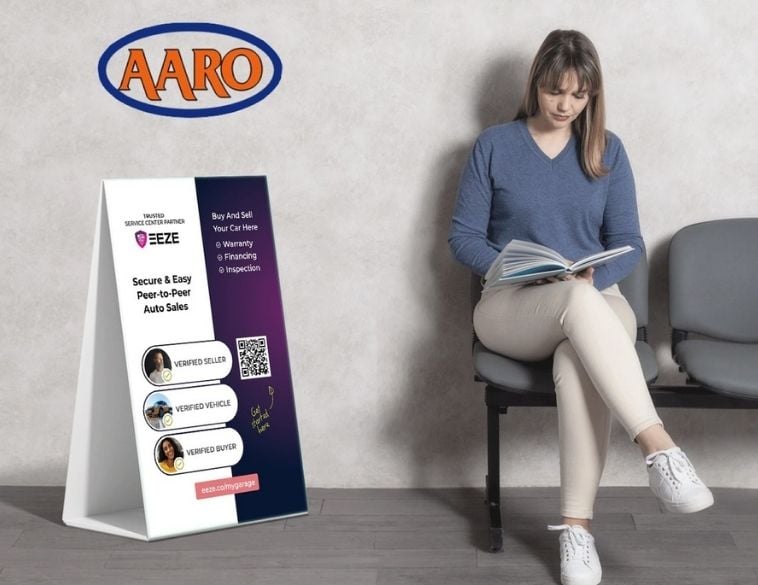Special seminar highlights the functionality of the new portal.
For aftermarket service repair technicians, finding the right information on a specific vehicle can sometimes be challenging, which adds delays to repairs, causes frustration for customers and can ultimately end up costing the shop time and money. Yet there is support available.
In Canada, the Automotive Industries Association of Canada and provincial associations such as Automotive Aftermarket Retailers of Ontario (AARO) are helping aftermarket service repair providers by ensuring that data access remains open to them as well as OEM authorized dealer service departments.
Via association with the National Automotive Service Task Force (NASTF) in the U.S., significant inroads are being made as it relates to vehicle information access for the aftermarket.
Special webinar
Recently, AIA Canada facilitated a special NASTF webinar designed to provide details on NASTF’s new, updated website (NASTF.org), how users can navigate through it and also answer any questions they might have.
NASTF’s Executive Officer Donny Seyfer, who is also a highly renowned and experienced auto service technician and shop owner (Seyfer Automotive, in Wheat Ridge, Colo.), provided an overview of what NASTF’s role actually is and took attendees through the new website, highlighting some of the functions it offers and where technicians can go to access the repair information they need.
The way this system is built now,” says Seyer, “is that our [NASTF] security registration is now the backbone of it.” Seyfer notes that setting the site up this way not only provides a highly effective way to manage NASTF membership but also that the new site “gives us the ability to do some really cool things.”
Seyfer explains that the registration and sign-up process for the site are now much simpler, faster and easier than it was in the past. “We have got several new programs coming out,” he says, “and I highly encourage you to fill this all in for some of the programs that are coming along.”
Specific VSP information
Besides regular NASTF members, Vehicle Security Professionals (VSPs) can also use the portal to access specific information, one reason why Seyfer says, the NASTF.org website has a fairly sophisticated password setup.
VSPs, once they log in, will find themselves in a dashboard that provides them with specific information related to security information and locksmithing so they know exactly what OEMs have or are providing updates to security information and what they specifically need to know to ensure they can access it.
When it comes to OEM-specific repair information, the NASTF.org site is now designed to load the automaker pages faster and has been optimized for mobile devices, since a lot of technicians will be using their smartphones or tablets while working in the service bay.
Heavy-Duty specifics
Besides repair information for light-duty vehicles, there is also a section specific for heavy-duty trucks as well, but the layout is different due to the different nature of heavy truck repairs since reprogramming is not as common on the large commercial vehicle side.
An interesting aspect of the heavy-duty section is bodybuilder information, which provides details on how the body of a particular truck is assembled and a complete breakdown of the body structure, providing a great deal of useful information not only for heavy-duty mechanical shops but also collision repairers.
Technicians are able to select individual OEMs on the site, allowing them to focus on the vehicles they do repair and put aside those that they do not. The result reduces confusion and helps technicians save time by accessing the exact brand, vehicle and repair information they need.
Tools required
Also, not only can technicians receive specific alerts, but also OEM news that includes not only service information, but the tools required to perform specific repairs.
For Service Information Requests (SIRs) NASTF has teamed up with Diag.net to create a brand-new portal. Users can access it either via NASTF.org or Diag.net. “It is very similar to what we had before,” says Seyfer, “in that you give us the information about the vehicle and diag.net will build it out for you by VIN.”
Seyfer says that NASTF encourages those using the site to contact the team to ensure the information being provided is relevant and up to date for both Americans and Canadians. He also wants to ensure that users understand the distinction, between CASIS (the Canadian Automotive Service Information Standard), which is an agreement, and NASTF, which is an association dedicated to helping service repair professionals access the information they need on both sides of the border.
“NASTF is helping to do the day-to-day work of making sure you have got access to what you are looking for,” explains Seyfer. “We have still got serious mountains to climb, and the only way we can climb them is by having your participation.”
For an overview of the new website, click on this link.



